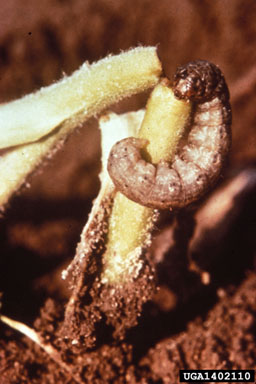Scouting for Cutworms in Tobacco
go.ncsu.edu/readext?307291
en Español / em Português
El inglés es el idioma de control de esta página. En la medida en que haya algún conflicto entre la traducción al inglés y la traducción, el inglés prevalece.
Al hacer clic en el enlace de traducción se activa un servicio de traducción gratuito para convertir la página al español. Al igual que con cualquier traducción por Internet, la conversión no es sensible al contexto y puede que no traduzca el texto en su significado original. NC State Extension no garantiza la exactitud del texto traducido. Por favor, tenga en cuenta que algunas aplicaciones y/o servicios pueden no funcionar como se espera cuando se traducen.
Português
Inglês é o idioma de controle desta página. Na medida que haja algum conflito entre o texto original em Inglês e a tradução, o Inglês prevalece.
Ao clicar no link de tradução, um serviço gratuito de tradução será ativado para converter a página para o Português. Como em qualquer tradução pela internet, a conversão não é sensivel ao contexto e pode não ocorrer a tradução para o significado orginal. O serviço de Extensão da Carolina do Norte (NC State Extension) não garante a exatidão do texto traduzido. Por favor, observe que algumas funções ou serviços podem não funcionar como esperado após a tradução.
English
English is the controlling language of this page. To the extent there is any conflict between the English text and the translation, English controls.
Clicking on the translation link activates a free translation service to convert the page to Spanish. As with any Internet translation, the conversion is not context-sensitive and may not translate the text to its original meaning. NC State Extension does not guarantee the accuracy of the translated text. Please note that some applications and/or services may not function as expected when translated.
Collapse ▲When to scout for cutworms in tobacco
Cutworms are a post transplant pest in tobacco and are only a concern during the first 4 weeks following transplant.
What part of the plant to scout for cutworms in tobacco
Small cutworm caterpillars may create holes in leaves, but large larvae can clip the stem of plants.

R.J. Reynolds Tobacco Company Slide Set, R.J. Reynolds Tobacco Company, Bugwood.org
Creative Commons License licensed under a Creative Commons Attribution 3.0 License.
How to scout for cutworms in tobacco
Cutworms damage is generally higher at field edges and in fields which have weedy borders. Cutworms larvae are nocturnal, so areas of the field with suspected cutworm damage should be revisited in the evening or at night to confirm larval presence. Treatments will only be effective if larvae are actually present!
Cutworm thresholds
Damage from cutworms in tobacco is relatively rare and post transplant foliar insecticides can be very effective, so preventative insecticide use pretransplant is not recommended. Management is recommended if 10% of plants are clipped. If less than 10% of plants die due to insect feeding, treatment is not necessary.


